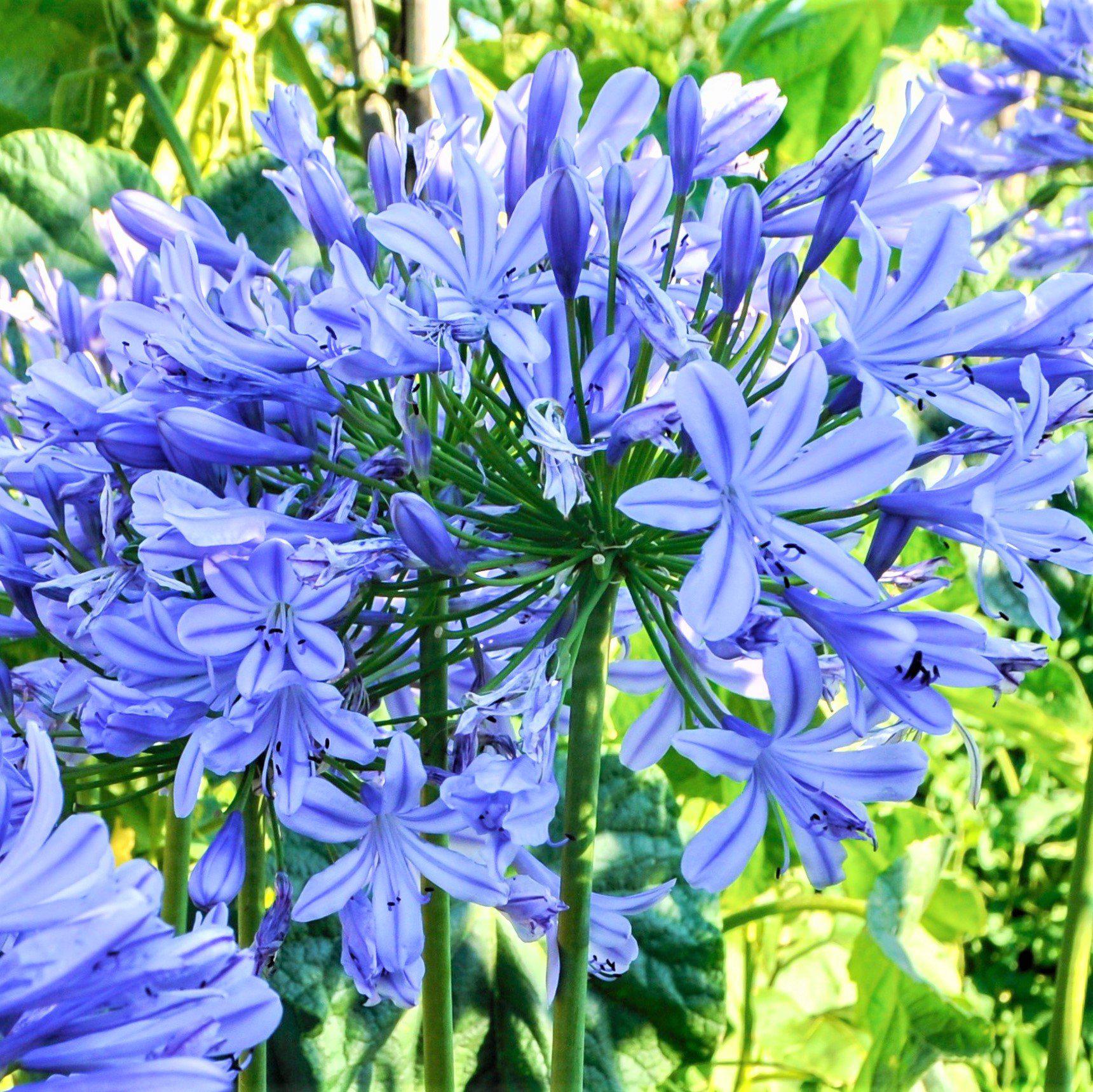Agapanthus Care Tips for Lush and Vibrant Flowers
Agapanthus Care Tips for Lush and Vibrant Flowers
Blog Article
Understanding the Art of Agapanthus Care: Important Steps for Healthy And Balanced Development and Lively Blossoms
In the world of horticulture, the cultivation of agapanthus stands as a satisfying venture for those that seek to support these elegant flowering plants. With their striking flowers and elegant vegetation, agapanthus has actually recorded the attention of gardeners worldwide. Nonetheless, attaining optimal development and dynamic blossoms calls for a nuanced approach that encompasses different essential steps. From picking the ideal selection to understanding trimming methods, the journey towards cultivating growing agapanthus plants is complex and holds the vital to unlocking the complete potential of these agricultural treasures.

Choosing the Right Agapanthus Range

When selecting the right Agapanthus selection for your yard, take into consideration factors such as climate viability, bloom color, and growth habit. Agapanthus, typically called Lily of the Nile or African lily, is available in a selection of shades ranging from tones of purple and blue to white. Choose a bloom color that complements your existing yard palette to develop an unified landscape. In addition, take into consideration the climate in your area to guarantee the Agapanthus range you choose can thrive in your details problems. Some varieties are extra tolerant of cold temperature levels, while others prefer warmer environments. Comprehending the development routine of various Agapanthus ranges is crucial for appropriate placement within your garden. Some selections have a clumping growth behavior, perfect for boundaries or containers, while others have a more spreading nature, appropriate for ground cover or mass growings. By very carefully assessing these factors, you can choose the ideal Agapanthus variety to enhance the appeal of your garden.
Ideal Growing Problems
Considering the optimum environmental demands is important for successful Agapanthus farming. Agapanthus plants are sensitive to chilly temperature levels and ought to be secured from frost throughout wintertime months.
To make sure healthy and balanced development and dynamic flowers, plant Agapanthus light bulbs at a depth of regarding 2-4 inches and space them 8-12 inches apart. Mulching around the base of the plants helps keep dampness and subdues weed development.
Watering and Feeding Tips
Keeping appropriate moisture levels and providing necessary nutrients are vital aspects in the treatment regimen for Agapanthus plants. When it comes to watering Agapanthus, it is crucial to strike an equilibrium. These plants like constantly moist dirt but are susceptible to root rot if click to read overwatered.
Fertilizing Agapanthus is essential for promoting healthy and balanced development and prolific blooms. Use a well balanced fertilizer, such as a 10-10-10 formula, in the very early springtime as brand-new development emerges. Repeat this application every 6-8 weeks throughout the expanding season. Avoid excessive fertilizing, as it can lead to lavish foliage at the cost of flowers. Always adhere to the supplier's guidelines for correct dilution and application techniques. By adhering to these watering and fertilizing ideas, you can guarantee your Agapanthus plants prosper and produce vivid, lasting blossoms.
Trimming Strategies for Agapanthus
Pruning Agapanthus plants at the proper times and with appropriate techniques is important for keeping their health and promoting optimal development and blooming. The perfect time to prune Agapanthus remains in late winter months or very early springtime before new growth emerges. Start by getting rid of any dead or yellowing leaves near the base of the plant. Cut them as short as possible without damaging the emerging shoots.
For flowered stems, wait till the flowers have withered and after that cut them back to the base. This not weblink only cleans the plant's look however also urges the growth of new flower buds. Deadheading spent flowers can likewise redirect the plant's power right into generating even more flowers instead of setting seeds. Nevertheless, if you want to gather seeds for propagation, leave some flowers to completely dry and fully grown on the plant.
Bear in mind to make use of clean, sharp tools to make accurate cuts and reduce the risk of presenting illness. Agapanthus. Regular trimming will certainly assist keep your Agapanthus looking neat and healthy while ensuring a bountiful screen of gorgeous blooms
Managing Typical Pests and Illness
After making sure proper trimming strategies for Agapanthus, it is vital to resolve typical parasites and diseases that can impact the wellness and vigor of these plants. One typical parasite that affects Agapanthus is the Agapanthus gall midge.
Furthermore, Agapanthus plants can endure from root rot if they are grown in inadequately draining pipes dirt. By being vigilant and taking prompt activity versus conditions and pests, you can help your Agapanthus plants thrive and produce vibrant flowers. Agapanthus.

Verdict
In verdict, understanding the art of agapanthus treatment involves picking the appropriate selection, supplying optimal planting conditions, proper watering and fertilizing, ideal trimming methods, and attending to typical insects and diseases. By following these crucial actions, you can make sure healthy and balanced development and vibrant flowers for your agapanthus plants. Remember to routinely monitor and keep your plants get redirected here to advertise their overall health and durability.
To make certain healthy and balanced development and dynamic blooms, plant Agapanthus light bulbs at a depth of about 2-4 inches and room them 8-12 inches apart. By complying with these watering and fertilizing pointers, you can ensure your Agapanthus plants prosper and create vibrant, long-lasting blossoms.
One common bug that affects Agapanthus is the Agapanthus gall midge. Furthermore, Agapanthus plants can suffer from origin rot if they are grown in poorly draining pipes dirt. By following these necessary actions, you can ensure healthy and balanced development and vivid flowers for your agapanthus plants.
Report this page